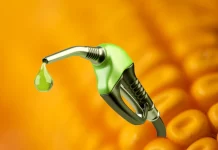WEEKLY COMMENT – JUNE 14TH TO JUNE 18TH,2021
WE’D BETTER KEEP OUR FEET ON THE GROUND
The commodities had a significant loss over the week after the Federal Reserve kept the interest rates unchanged, but alerted that it might raise them if it sees some inflation risk ahead. The meltdown of the commodities affected mostly grains, with the funds blowing up the long position they had. Soybean oil was duly fried and lost 12% over the week, soybean followed suit with a loss close to 8%; coffee dropped 5% and metals dropped 8% on average. Whatever happened to the new cycle of the commodities, huh?
Sugar suffered a resounding drop of 118 points over the week, or less than 26 dollars per accumulated ton against the previous Friday. After hitting R$2,093 per ton at the beginning of June, July/2021 closed out the week at R$1,954 per ton, a R$139-per-ton loss. Just to remind the readers that we said here we were bearish in real per ton over the short term and bullish in cents per pound over the long term. We were right.
For the trading companies, the drop can be a relief to the cash flow. The margin calls with the upward sugar market came close to US$2 billion. With the drop, some fixations on the part of the end consumers occurred and at least 40% of the cash flows returned.
On a different note, as we know, primary energy is all available energy in nature before being processed or converted, such as crude oil, wind energy, solar energy, to mention a few. Electric energy isn’t primary energy, because it is a variant of (and dependent on) other energies that can be a hydroelectric power plant, a nuclear plant, a wind plant, for example.
The migration of one form of energy to another one takes time until its extraction or production and distribution are economically viable and can be made available for an increasing number of consumers. Just to give you an idea, the first oil well was drilled in 1859 in Titusville, Pennsylvania and it took over 100 years for oil to become the dominating energy source on the planet.
Today fossil fuels, made up by the breakdown of living organisms, include oil, mineral coal and natural gas account for 87% of all the demand for primary energy of the planet. Therefore, the so-called inexhaustible renewable energies (depending on Mother Nature) are water, solar, wind and biomass (including ethanol, biodiesel, among others).
Energy consumption on the planet has been growing exponentially. Over the last 30 years only, the consumption of primary energy has grown by 1.9% per year and the more the countries develop and their economies expand, the greater the consumption per capita on the part of the population will be. Today, only 80% of the world population has access to electricity. This will change as poverty is rooted out. Over the last 20 years, the proportion of the world population living in extreme poverty has dropped by half (that’s 8.6% of the world population). And average life expectancy on the planet is 70 years, which is closely related to the consumption of energy.
Two factors should boost energy consumption even further – China’s trade relations with Africa, which should produce wealth on the continent, and the substantial improvement of people’s life. In 2019, trade between the two sides reached US192 billion. Twenty years earlier it didn’t come to US$10 billion.
Back to energy production – and that is why I made this long opening remark. Renewable energies are growing at a slower speed than the global demand for energy. As much as we want a wonderful world with pink little bears, all trash being recycled, nobody using fossil fuels anymore and being able to bathe and drink water from the Tietê River (a polluted river in São Paulo), this will never happen. It’s not because I’m pessimistic, though.
The fact is that it’s mathematically impossible for the world to continue growing and demanding energy at a speed greater than our capacity to produce clean energy (nuclear, wind, solar and biomass). It doesn’t add up. In order to buy into the unfeasibility of such feat, a person needs to carry a picture of Greta Thunberg (I’d rather listen to Greta Van Fleet) in the pocket, clap for the Sun, talk to the roses, be one of those fanatic activists and/or use some suspicious herb.
Having said that, there is no way Brazil will cease producing ethanol and flood the planet with sugar in a near future because our vehicles will be electric from 2030 or 2035 on as some believe. I don’t doubt that might happen in Europe or in the United States. But here, a country where 35 million people have no access to water, 100 million have no access to sewage system, and where one cannot find decent public restrooms along the highways, do you really think you will find places to charge batteries for your electric car? You must be kidding.
We believe this decade will be thriving, supported by three great pillars: the growth of the world sugar consumption in Asia backed up by the improvement on the income and population growth; the stimulus programs for renewable fuel consumption, which will expand the demand for ethanol, and the perspective of economic improvement in Brazil, which will make the levels of fuel and food consumption return to the pre-pandemic level. We will have to expand the industrial complex.
I got the comment about India by Álvaro Mendonça, an experienced executive on the financial market: “India’s decision [to increase ethanol mix in gas] can have an impact on the global renewal energy balance and in the Brazilian case I see it having an uncertain short-term effect and a positive long-term effect. For the world scenario, if we take India as an economic lab, deciding to reduce the dependence on oil and, therefore, on reserves for purchasing, might be a solution for several small countries or for countries in financial difficulty. The world ethanol production can increase a lot over the long term and when combined with ecological decisions to substitute fossil fuels, oil price can get into a downward trajectory (buyers reducing the appetite and sellers trying to take advantage of the little left over). In the Brazilian case the short term is uncertain. As in Venezuela, energy can be a relevant canvasser, no matter whether the oil park will be scrapped or not. Over the long term, Brazil can go supply either fuel alcohol or technology, but it will have to survive until then”. I agree with it 100%.
The third estimate for pricing volume for export sugars of the mills for the 2022/2023 crop showed that until May 31, 2021 the mills were fixed at 20.9%, which represents 5.23 million tons of sugar priced for the period.
The average measured price accumulated from October/2020 to May/2021 is 14.25 cents per pound, without taking into account the polarization premium. The average value of fixation is R$1,800 per FOB Santos ton, equivalent to R$0.7836, both including the polarization premium.
To read Episode 1 click here
To read Episode 2 click here
To read Episode 3 click here
Mr. Arnaldo Luiz Correa is the Director at Archer Consulting. He is a Risk Manager with an experience of almost 30 years in the agriculture commodities market.
To get in touch with Mr. Arnaldo, write on arnaldo@archerconsulting.com.br












